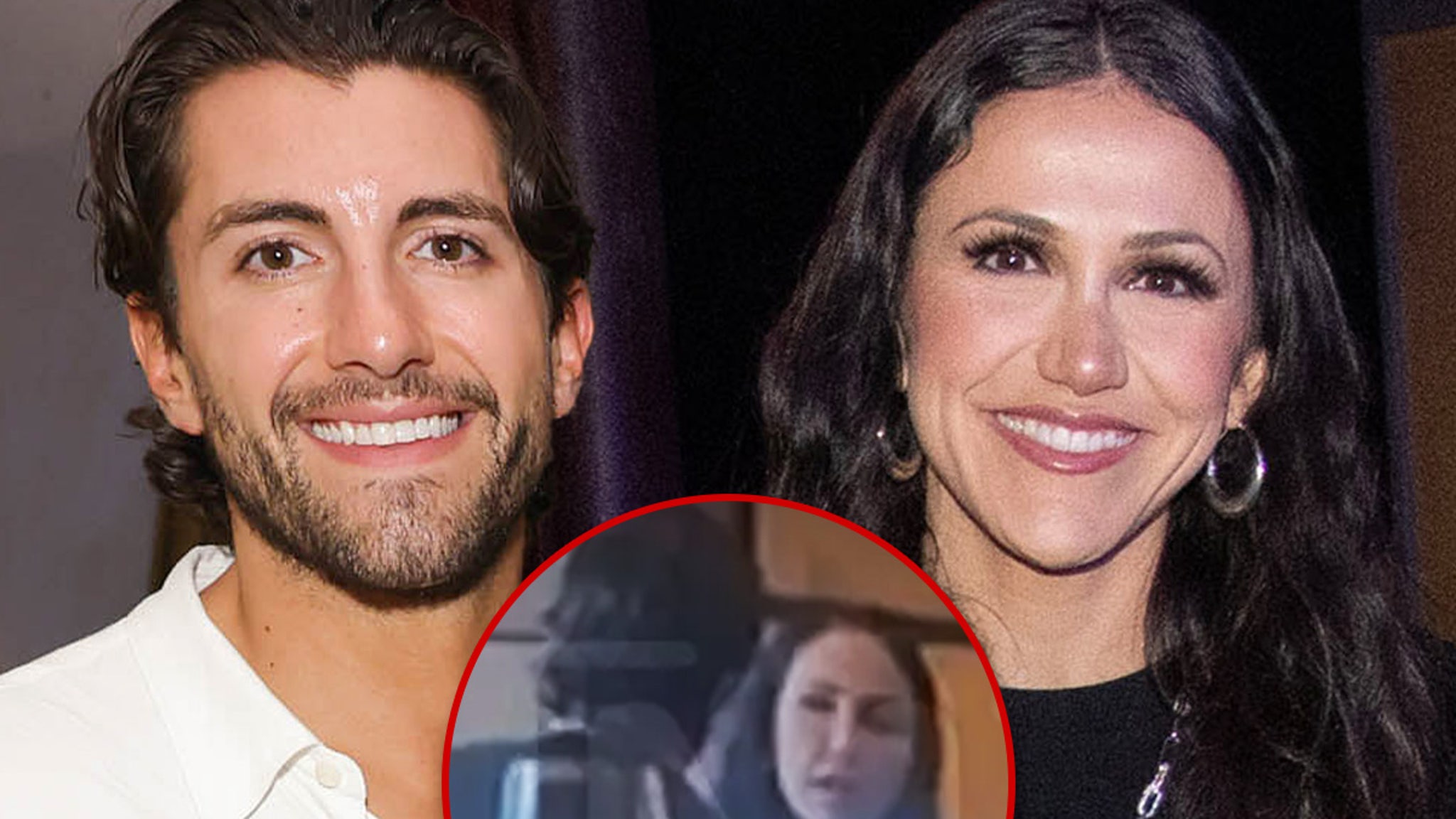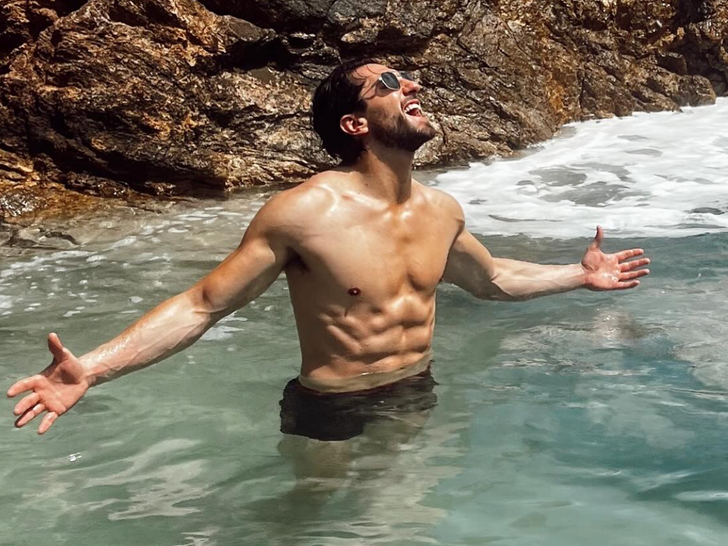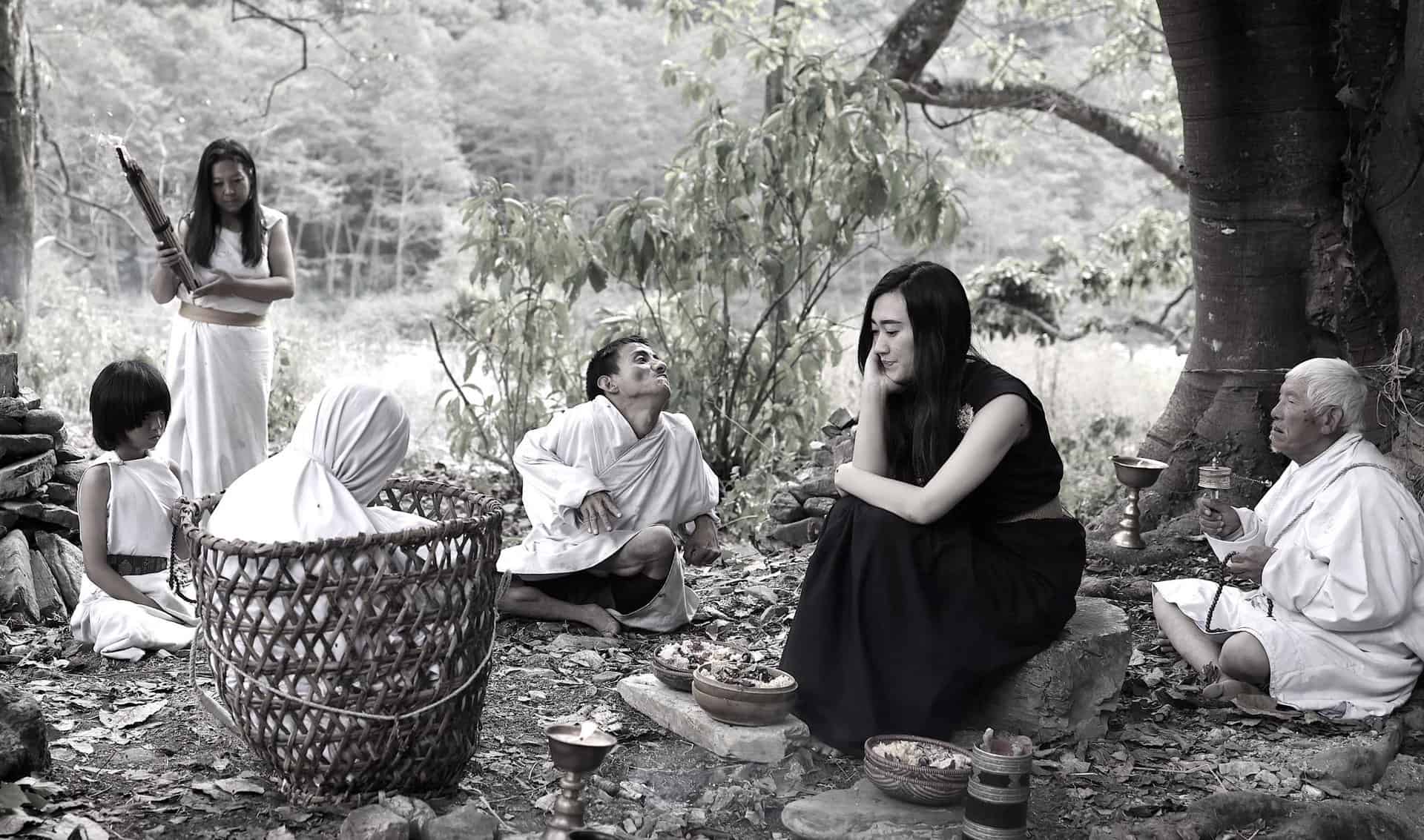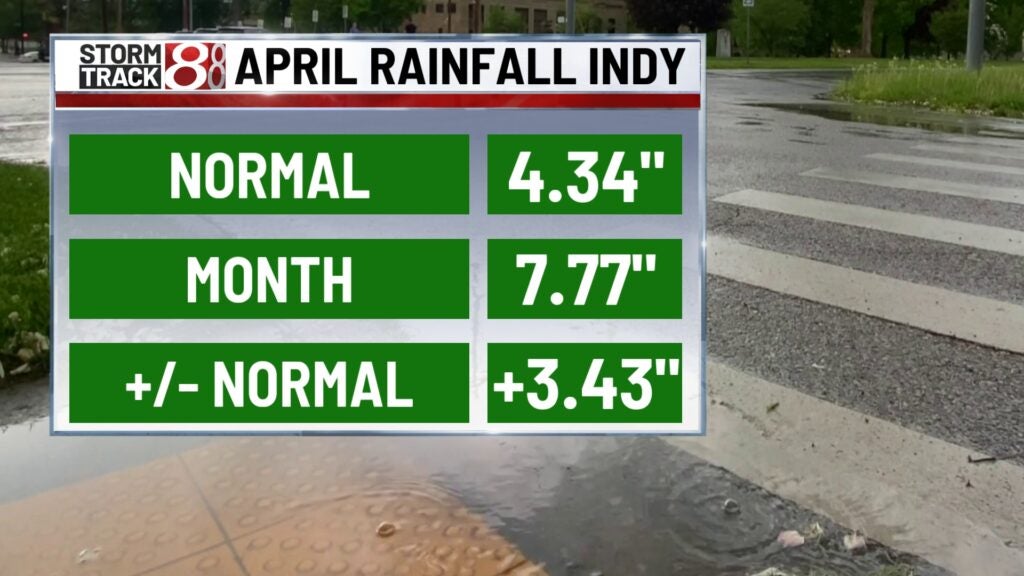Lifestyle
With Succession in Focus, LVMH Adds Alexandre and Frédéric Arnault to Board


Lifestyle
Before living in a pineapple under the sea, SpongeBob was born as an educational tool

Nickelodeon’s SpongeBob SquarePants made its TV debut 25 years ago on May 1, 1999 before the official series launch in July 1999.
Nickelodeon
hide caption
toggle caption
Nickelodeon

Nickelodeon’s SpongeBob SquarePants made its TV debut 25 years ago on May 1, 1999 before the official series launch in July 1999.
Nickelodeon
Finish this tune: Who lives in a pineapple under the sea?
If you answered correctly with “SpongeBob SquarePants!” you’ve likely heard of the square, sponge cartoon who made his TV debut 25 years ago on May 1, 1999 (before the official series launch in July 1999).
But before the “absorbent” and “porous” SpongeBob took over television and movie theater screens, he was actually Bob the Sponge in an educational comic book.
Here’s a look at the story behind SpongeBob.
From Bob the Sponge to SpongeBob
SpongeBob SquarePants creator Stephen Hillenburg attended Humboldt University majoring in marine science with a minor in art. After graduating in 1984, Hillenburg eventually began working at the Ocean Institute in Dana Point, Calif. While working as a marine science educator there, Hillenburg illustrated the flora and fauna of tidal pools in the form of an educational comic book called The Intertidal Zone. And the narrator of the comic book may look familiar: a sea sponge with sunglasses and a round face named “Bob the Sponge.”

In 1989, Hillenburg enrolled in the California Institute of Art’s Experimental Animation program. After completing the program, he gained more animation experience. Eventually, he was hired as a director on the Nickelodeon cartoon Rocko’s Modern Life, which aired from 1993 to 1996. While working on the show, he was encouraged to turn The Intertidal Zone into an animated format, something he could pitch to Nickelodeon.
Speaking to NPR’s Morning Edition in 2001, Hillenburg said he worked to develop his characters’ design and personalities, including Bob the Sponge.
He described the moment of inspiration: “It wasn’t until I drew a square sponge, like a sink sponge, that it really seemed to fit that character that I was looking for, that innocent, squeaky-clean I guess you could say, the square peg in the round hole.”
After approving Hillenburg’s pitch, Nickelodeon set up SpongeBob SquarePants to be the network’s first Saturday morning cartoon.
Fun for all ages leads to a multibillion-dollar franchise
SpongeBob SquarePants first aired as a preview after Nickelodeon’s Kids’ Choice Awards on May 1, 1999. The first segment of this preview, titled “Help Wanted,” is only eight minutes long, yet it introduces a robust coterie of residents in the fictional, underwater town of Bikini Bottom.
From SpongeBob’s best friend, a starfish named Patrick (voiced by Bill Fagerbakke); to Mr. Krabs, a greedy, red crab voiced by veteran character actor Clancy Brown; to a grumpy octopus named Squidward (voiced by Roger Bumpass); to two characters voiced by Tom Kenny: Gary, a meowing pet sea snail, and of course, the optimistic and overzealous kitchen sponge and titular character, SpongeBob SquarePants.
“Help Wanted” shows SpongeBob preparing for his dream job as a fry cook at the local greasy eatery owned by Mr. Krabs: “The Krusty Krab.”

In promotional art from Nickelodeon, SpongeBob (center) serves “Krabby Patties” to patrons: from left, Sandy Cheeks, Squidward, Mr. Krabs and Patrick.
Nickelodeon
hide caption
toggle caption
Nickelodeon

In promotional art from Nickelodeon, SpongeBob (center) serves “Krabby Patties” to patrons: from left, Sandy Cheeks, Squidward, Mr. Krabs and Patrick.
Nickelodeon
Tom Kenny, who worked with Hillenburg on Rocko’s Modern Life, took a unique approach to developing the voice for SpongeBob. Speaking with Fresh Air‘s Terry Gross in 2004 about the process, Kenny said:
“When it came time to come up with a voice, it was just a matter of finding a voice that was childlike and maybe childish, but not a child, non-age specific, enthusiastic and just kind of weird. And we finally settled on this elfish helium voice that SpongeBob wound up being.”

The first episode preview contained two more segments: “Reef Blowers” and “Tea At The Treedome”; the latter of which introduced a scientific squirrel who lives in a biodome named Sandy Cheeks, voiced by Carolyn Lawrence.
The series officially debuted on July 17, 1999. That same year, SpongeBob SquarePants beat out the popular Saturday morning cartoon Pokémon in average viewership ratings.

The Cast of Nickelodeon’s SpongeBob SquarePants: The Broadway Musical poses onstage during opening night on Dec. 4, 2017, at the Palace Theatre in New York City.
Jenny Anderson/Getty Images for Nickelodeon
hide caption
toggle caption
Jenny Anderson/Getty Images for Nickelodeon

The Cast of Nickelodeon’s SpongeBob SquarePants: The Broadway Musical poses onstage during opening night on Dec. 4, 2017, at the Palace Theatre in New York City.
Jenny Anderson/Getty Images for Nickelodeon
SpongeBob SquarePants only grew in popularity. By 2002, the show had almost 56 million total viewers, with almost a third aged 18 to 49, the St. Petersburg Times reported that year. In 2004, its first theatrical release, The SpongeBob SquarePants Movie, grossed $141 million worldwide.
Hillenburg left as showrunner after the movie was released but remained credited as an executive producer on the series and co-wrote the story for 2015’s The SpongeBob Movie: Sponge Out of Water.
The Emmy award-winning series is in the midst of its 14th season. And the franchise has expanded to include another theatrical release in 2020, two spinoff television series, more than two dozen video games and even theme park rides.

A musical based on the underwater sponge and his friends took to Broadway in 2017 and had over 300 performances before closing in 2018. The New York Times reported the franchise had generated $13 billion in retail merchandise sales by 2017.
The staying power of SpongeBob
In 2017, Hillenburg announced that he had been diagnosed with ALS, a progressive neurodegenerative disease. He died a year later. As a tribute to Hillenburg, more than one million fans signed a petition for the show’s characters to perform at the 2019 Super Bowl halftime show.
Colleagues close to him credit much of the cartoon’s success to Hillenburg. Speaking with Fresh Air in 2004, Kenny said Hillenburg balanced attention to detail with the flexibility of the characters.

From left, actor Bill Fagerbakke, SpongeBob SquarePants creator Stephen Hillenburg and actor Tom Kenny attend the premiere of The SpongeBob SquarePants Movie on Nov. 17, 2004, in New York City.
Peter Kramer/Getty Images
hide caption
toggle caption
Peter Kramer/Getty Images

From left, actor Bill Fagerbakke, SpongeBob SquarePants creator Stephen Hillenburg and actor Tom Kenny attend the premiere of The SpongeBob SquarePants Movie on Nov. 17, 2004, in New York City.
Peter Kramer/Getty Images
“Steve Hillenburg definitely is the big kahuna and, a lot of times, just has every vocal nuance and eye blink and twitch mapped out to the nanosecond in his mind,” he said. “And then other times, he’ll just take you off the leash and go, ‘You know, I don’t know where this is going. Just take it where it feels funny.’ So you never know whether you’re going to be doing math or jazz. It’s kind of cool.”
Twenty-five years after its TV debut, the show continues. SpongeBob SquarePants was renewed for its 15th season last fall and another movie (this one featuring Sandy Cheeks) is planned.
More moments in history


Lifestyle
'Bachelorette' Star Jason Tartick Does Dinner with New Girlfriend

‘Bachelorette’ alum Jason Tartick is taking his new relationship with TikTok star Kat Stickler out of the shadows and into the spotlight … as the pair stepped out for a dinner date Monday evening.
TMZ.com

The couple hit the town in Tampa, FL at the restaurant Meat Market, and they were joined by Kat’s young daughter MJ … which speaks volumes about the seriousness of their relationship.
Eyewitnesses tell TMZ … 3 other guests were on hand for the evening out with the couple — so, it’s crystal clear Jason and Kat are done keeping a low public profile.

We’re told Jason and Kat were very flirty during the dinner — with the TikToker even feeding her man a couple bites of food at one point.
The duo was seen laughing and smiling and, to all who saw them, they seemed totally comfortable showing their affection for each other in public.
Word of Jason and Kat’s relationship broke last week … after they’d previously danced around confirming their romance.

Remember, Kat and her ex-husband, Mike Stickler, were a beloved TikTok couple … announcing their separation in an emotional video in March 2021.
Jason was notably engaged to former ‘Bachelorette’ Kaitlyn Bristowe, but the pair ended up calling off their engagement in August 2023.

And, it seems Jason and Kat were always meant to cross paths … as Kat almost joined ‘The Bachelor’ franchise after her divorce.
In a recent episode of Jason’s podcast, she confirmed she was approached about auditioning for “The Bachelorette,” but ultimately turned down the opportunity.
Regardless … it looks like it’s all working out in the end!
Lifestyle
Judi Dench reflects on a career built around Shakespeare : Consider This from NPR

English actress Judi Dench at a dress rehearsal of ‘Hamlet’, making her London debut as Ophelia in 1957.
Bob Haswell/Getty Images
hide caption
toggle caption
Bob Haswell/Getty Images

English actress Judi Dench at a dress rehearsal of ‘Hamlet’, making her London debut as Ophelia in 1957.
Bob Haswell/Getty Images
You’re reading the Consider This newsletter, which unpacks one major news story each day. Subscribe here to get it delivered to your inbox, and listen to more from the Consider This podcast.
1. Judi Dench built a career around Shakespeare’s work.
Dench shone in several Shakespeare roles, from star-crossed lover Juliet, to the tragic Lady Macbeth, to the comical Titania in A Midsummer Night’s Dream. Now at 89, she says the roles and lines have stuck with her.
“It’s the only thing I can remember. I can’t remember where I put my shirt yesterday or a pair of shoes. I can’t remember what’s happening tomorrow, and I can’t remember what happened last week. Sonnets and Shakespeare I can remember… Something to do with the fact that the way he writes is like the beat of your heart.”
She reflects on all her roles in the new book Shakespeare: The Man Who Pays The Rent. It chronicles a series of conversations over four years between Dench and her friend, the actor and director Brendan O’Hea.
2. Writing this novel helped both of them during COVID lockdowns.
O’Hea said he considered another title for the book – Herding Eels – because it was so hard to get Dench to talk about her craft. But working on it together during the pandemic really helped, because they were able to just focus and go through all the plays.
“I’d have to say, ‘Well, look. There’s some Butterkists in the other room, or there’s a glass of champagne waiting for you. Let’s just do five minutes.’ I know your game, she’d say. So, yeah, it took a lot of coaxing. She’s very, very slippery… But we got there in the end.”
Dench has also been struggling with deteriorating eyesight, which has limited her ability to take on new roles.
“I never had realized that I need to know exactly where a speech is on a page and in relation to the other speeches,” Dench said. “Well, of course, I can’t do that. I can be taught a part, but I have to know actually where it sits. And that’s impossible now.”
For Dench, putting together this book was a savior during a particularly difficult time. “So it’s not only saved our life during COVID but saved mine during this time when I can’t say yes to a part because I can’t see it… There are pluses to be had though, if you look for them.”
3. Dench and O’Hea believe Shakespeare is still relevant.
O’Hea points to how Shakespeare’s work is embedded in the English language. “You know, we didn’t know the word ‘assassination’ until Shakespeare coined it. And there’s the whole raft of other words and phrases that Shakespeare came up with.”
And for Dench, nobody has written about the human experience quite like Shakespeare. “The whole raft of human feelings — about love, about envy, about idolatry, about sadness, about death, about the afterlife — there’s nobody who has written like that and who still remains with us in our, as I say, everyday expressions.”
Part of the beauty in it to Dench, is that there’s no right way of doing Shakespeare.
“Somebody who has been in love for the first time — they may not have been in love the way that Juliet is in love. But nevertheless, they understand the emotion. And Shakespeare was able to distill that.”
For sponsor-free episodes of Consider This, sign up for Consider This+ via Apple Podcasts or at plus.npr.org. Email us at considerthis@npr.org.
This episode was produced by Elena Burnett and Erika Ryan. It was edited by Courtney Dorning. Our executive producer is Sami Yenigun.
-

 Education1 week ago
Education1 week agoVideo: Dozens of Yale Students Arrested as Campus Protests Spread
-

 World1 week ago
World1 week agoEU sanctions extremist Israeli settlers over violence in the West Bank
-

 Politics1 week ago
Politics1 week agoFetterman hammers 'a–hole' anti-Israel protesters, slams own party for response to Iranian attack: 'Crazy'
-

 World1 week ago
World1 week agoPeriod poverty still a problem within the EU despite tax breaks
-

 Politics1 week ago
Politics1 week agoA battle over 100 words: Judge tentatively siding with California AG over students' gender identification
-

 Movie Reviews1 week ago
Movie Reviews1 week agoShort Film Review: Wooden Toilet (2023) by Zuni Rinpoche
-

 World6 days ago
World6 days agoHaiti Prime Minister Ariel Henry resigns, transitional council takes power
-

 News6 days ago
News6 days agoLarry Webb’s deathbed confession solves 2000 cold case murder of Susan and Natasha Carter, 10, whose remains were found hours after he died















